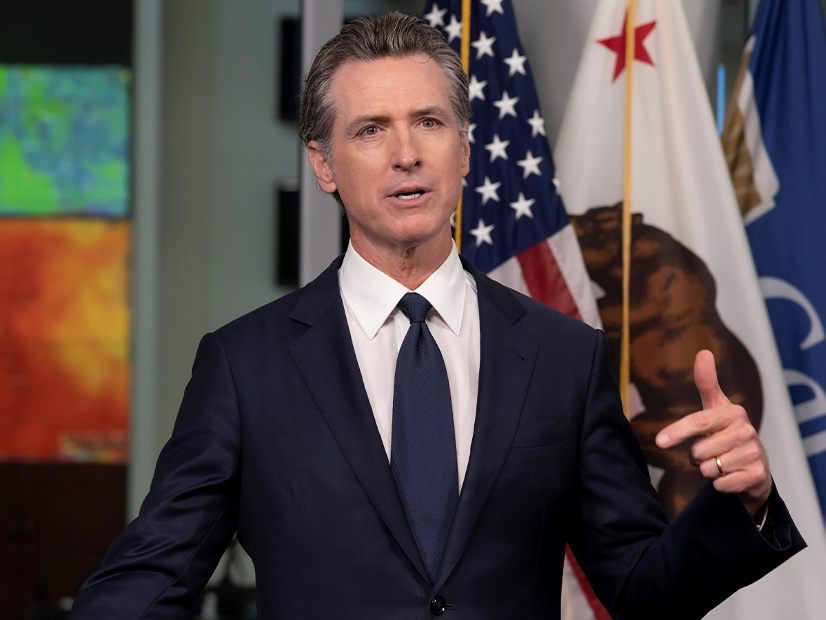California Gov. Gavin Newsom on Wednesday proclaimed a state of emergency aimed at temporarily increasing energy production and reducing demand in response to an extreme heat wave forecast to hit the state this weekend.
Newsom’s emergency proclamation will allow gas-fired power plants to generate additional electricity by loosening air quality requirements and restrictions on fuel use. The proclamation relaxes restrictions on the use of backup generators from 2 p.m. to 10 p.m. on days in which CAISO has declared an Energy Emergency Alert Level 2 or 3.
And ships berthed at California ports won’t be required to use shore power when CAISO declares a Level 2 or 3 energy alert.
The heat wave, which is forecast to last over the Labor Day holiday weekend and through Wednesday, is expected to be the most extensive so far in the West this year. The temperature in Death Valley is forecast to peak at 126 degrees F on Saturday, which would tie the highest temperature ever recorded on Earth in the month of September.
“We are anticipating this extreme heat to be a length and duration the likes of which we haven’t experienced in some time,” Newsom said during a news conference on Wednesday.
The emergency proclamation issued on Wednesday is similar to one the governor issued during a heat wave in July 2021.
“We’ve headed these issues off in the past,” Newsom said Wednesday. “We did so last year quite successfully. I’m confident we’ll do it again this year and this week.”
Newsom concluded his remarks by urging residents to stay safe and hydrate.
Shortly after the news conference concluded, CAISO issued an Energy Emergency Alert Level 1, which means real-time analysis has shown that all resources are in use or committed for use, and energy deficiencies are expected. A Level 1 alert is less severe than a Level 2 or 3 warning, the latter of which signals the likelihood of rolling blackouts. The ISO’s grid is most vulnerable in the evening hours as solar resources roll offline and other generating sources are required to ramp up to fill the drop-off in production.
Also on Wednesday, CAISO issued a statewide “flex alert,” a call for voluntary electricity conservation on Wednesday from 4 p.m. to 9 p.m. to reduce the risk of outages. Additional flex alerts are possible through the Labor Day weekend, CAISO said.
CAISO is keeping an eye on Sunday and Monday in particular, when it expects peak loads of around 48,000 MW. (See Heat Wave to Test Western Grid this Weekend.)
During his news conference, Newsom touted progress the state has made in its transition to clean energy. An estimated 4,000 MW have been added to the grid that weren’t available in July 2020, the governor said.
Recently developed emergency measures include the addition of generators and a strategic energy reserve, more procurement and demand response to produce 2,000 MW in response to emergency conditions, according to a release.
Still, the heat wave is stretching limited energy resources across the Western U.S., Newsom said. And the state’s hydroelectric generation has been hurt by the extended drought.
Newsom also pointed to climate bills the state Legislature might pass on Wednesday, the final day of the session. Those include Senate Bill 846, which would keep the Diablo Canyon nuclear plant open beyond its scheduled 2025 retirement.
Assembly Bill 2133 would increase the state’s greenhouse gas reduction target from 40% below 1990 levels by the end of 2030, to a 55% reduction in that period.
Hudson Sangree contributed to this article.




